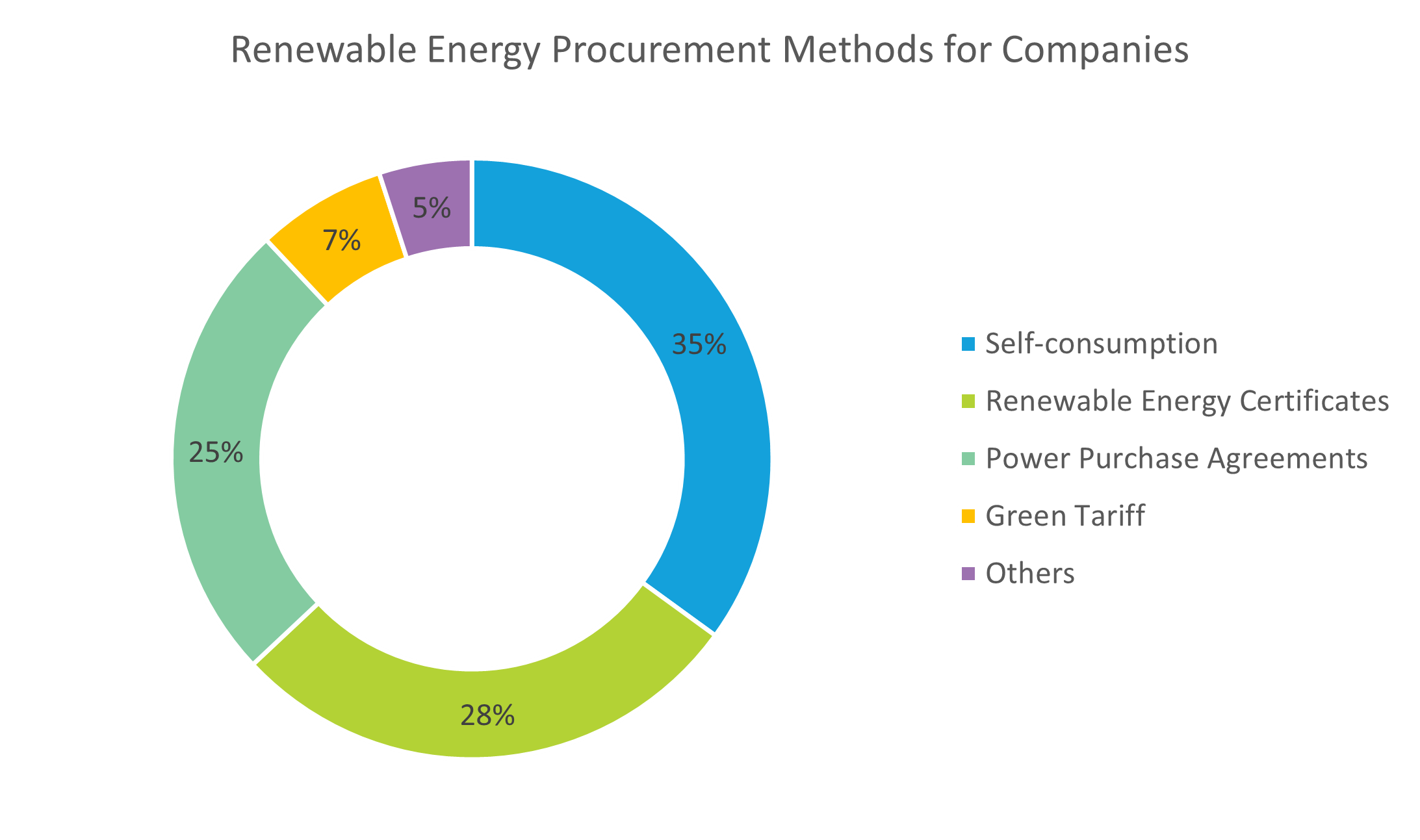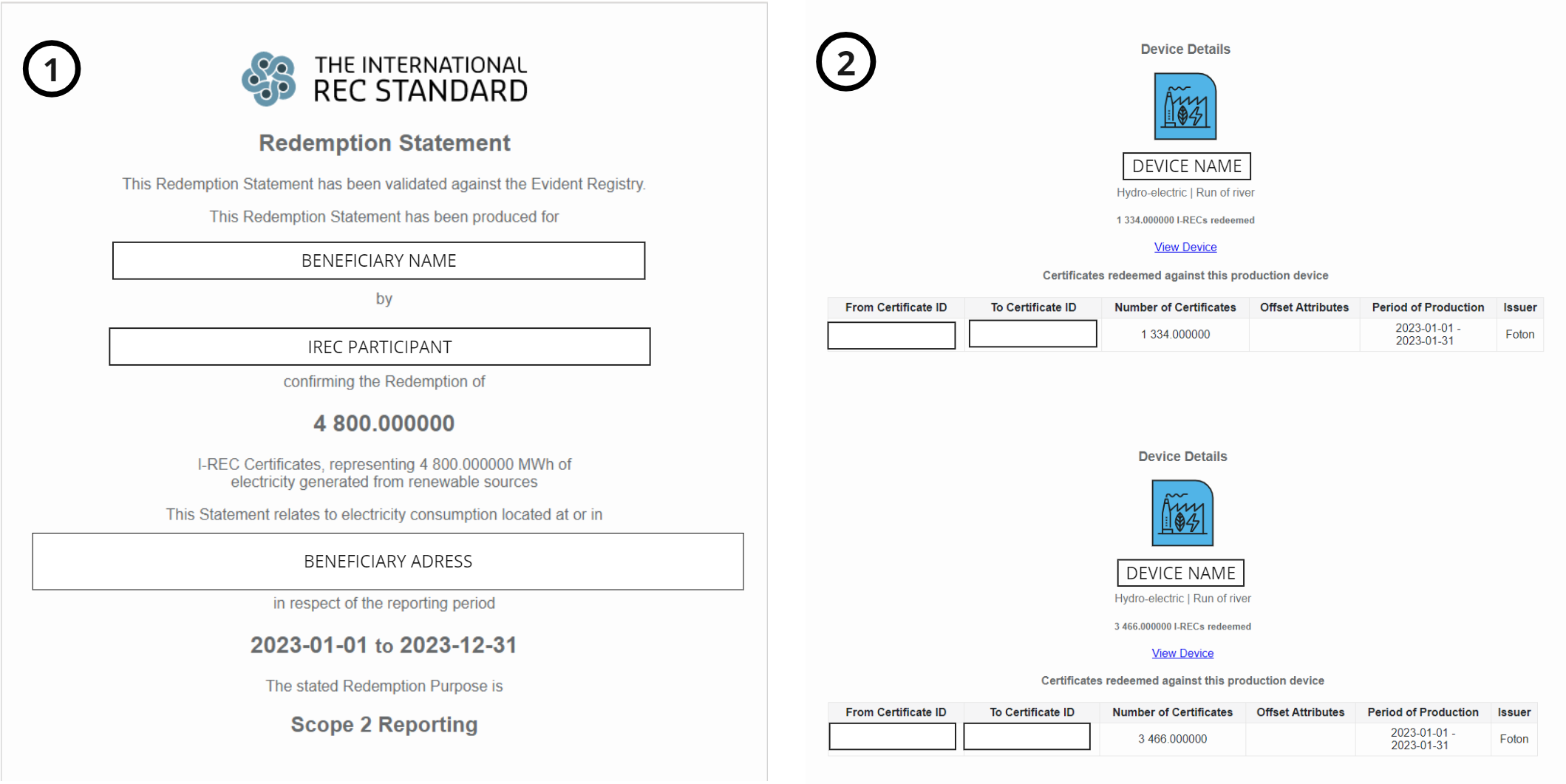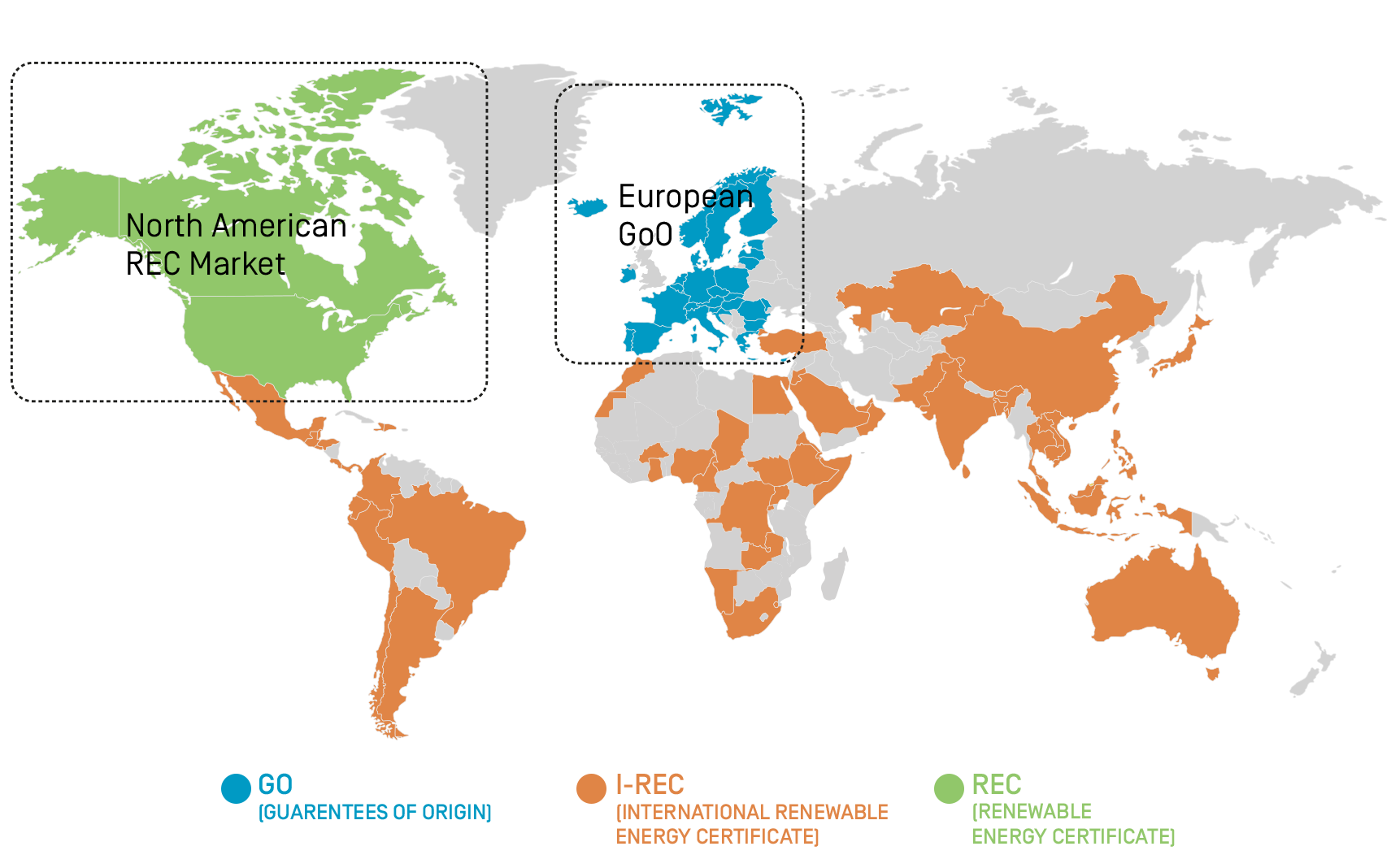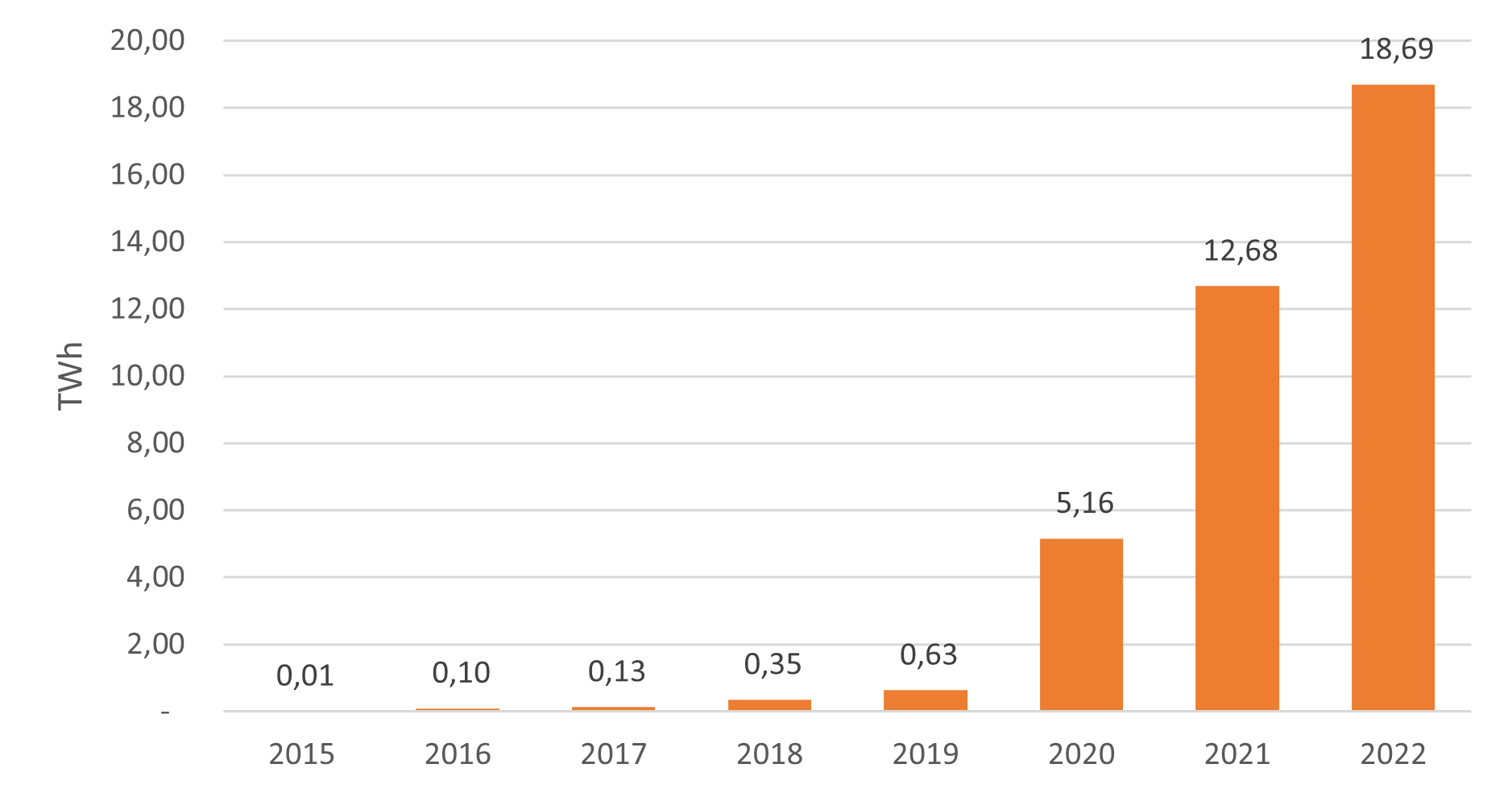 FEATURED INSIGHTS
FEATURED INSIGHTS
How Companies Procure Renewable Energy?
The demand for renewable energy as a separate product by consumers is increasingly gaining popularity today. The request of multinational and corporate companies for their suppliers in Turkey to commit to using renewable energy plays a significant role in the development of this market in Turkey. The obligations of companies to fulfill their sustainability commitments, such as supplying renewable energy to international commitments like RE100 members, green financing, and export obligations, are the main sources of motivation for supplying renewable energy. Companies meeting their electricity demand from renewable energy sources play a crucial role in achieving their sustainability goals by offsetting their indirect (Scope 2) emissions.
Methods of sourcing renewable energy:
1. Self-Consumption Model
2. Unbundled Renewable Energy Certificates
3. Bundled Renewable Energy Certificates
- Power Purchase Agreements
- Green Tariff

The expanding market, accompanied by companies' sustainability commitments, represents 18.5% [1] of the total global demand for renewable electricity and utilizes various methods, including the self-consumption model, green certificates, and power purchase agreements (PPA). According to a study conducted by IRENA, the self-consumption model is the most commonly used method by companies for supplying renewable energy [1].
 Figure 2: Renewable energy procurement mechanisms by private companies
Figure 2: Renewable energy procurement mechanisms by private companies
Renewable Energy Certificates consist of two main parts: First part includes information about the company which is using renewable energy credits for reporting, the amount of renewable energy credits used, and the reporting period. In the second part, the certificate indicates the renewable energy source, production period, and quantity of the credits used for the certificate.
 Figure 3: Example of a renewable energy certificate
Figure 3: Example of a renewable energy certificate
As the best practice method, companies that are reporting in renewable energy certificates should prefer renewable energy sources connected to the consumption point through the grid. This requires the use of different renewable energy certificate systems that vary in each geographic region. In the United States and Canada, REC (Renewable Energy Certificate) is used; in Europe, GO (Guarantees of Origin) is used; and in Asia, the Middle East, and South America, including Turkey, China, and Brazil, a total of 51 countries [2] use I-REC (International Renewable Energy Certificates). Some countries have their own local renewable energy certification systems, as shown in Figure 4. The most widely used renewable energy certificate mechanisms worldwide have shown in the map below.
 Figure 4: The most widely used renewable energy certificate mechanisms by country[3]
Figure 4: The most widely used renewable energy certificate mechanisms by country[3]
Renewable energy certificates stand out as a tool to facilitate investments in renewable energy and to provide the necessary financing in markets (e.g. Europe, USA) where the Renewable Energy Resources Support Mechanism (YEKDEM [TR], Feed-in Tariff [EN]) for the allocation of new renewable energy capacities don’t exist, and their demand has been increasing over the years.
The graph below shows the changes in IREC Credit generation amounts in Turkey over the years.
 Figure 5: IREC credit amounts that has been issued in Turkey between 2015-2022 [4]
Figure 5: IREC credit amounts that has been issued in Turkey between 2015-2022 [4]
Primary motivation for companies when supplying renewable energy are to reduce their indirect emissions, thereby achieving Environmental, Social, and Corporate Governance (ESG) scores, as well as gaining access to new sources of export and trade finance.
EU Carbon Border Adjustment Mechanism published on May 10, 2023 [5], has approved the use of bundled renewable energy certificates to report indirect emissions of actual embedded emissions in the cement, fertilizer, and energy sectors.
1. Self-Consumption Model
Self-consumption refers to the use of energy generated from renewable energy sources for consumption, where the production and consumption occur at the same measurement point or belong to the same legal entity. In energy systems based on renewable energy sources, commercial and industrial facilities can generate and consume electricity from renewable energy sources such as solar panels, wind turbines, hydroelectric generators, or biomass production systems to meet their own energy needs. Through self-consumption, dependency to the electric grid can be reduced, and energy costs can be protected against price fluctuations.
To ensure the traceability and calculation of the amount of renewable energy used in consumption, it is best to register these self-consumption plants in certificate programs that verify the energy attributes of the produced energy. This enables the inclusion of these productions in footprint reporting, serving as the best practice method for carbon footprint reporting.
Additionally, heat recovery through cogeneration technology can be evaluated within the self-consumption model and it is possible to be credited with I-REC [6].
2. Unbundled Renewable Energy Certificates
The supply of unbundled renewable energy certificates represents the amount of renewable energy certificates that consumers have obtained for their electricity consumption within a specific reporting period. In this supply method, there is no requirement for an electricity sales agreement. Credits verifying the renewable energy attributes are used in accordance with the consumption period and quantity.
The most commonly used method for renewable energy supply in Turkey is the supply of unbundled renewable energy certificates. The reason industrial and commercial establishments choose this method is due to the fact that renewable energy power plants in Turkey sell their electricity through the YEKDEM mechanism. We will discuss this topic in detail with our of Power purchase agreements (PPA) article.
3. Bundled Renewable Energy Certificates
Bundled renewable energy certificates refers to the addition of renewable energy certificates to a bilateral electricity sales agreement between an Retail Electricity Provider and a consumer. This category includes Power Purchase Agreements (PPA) and Green Tariffs.
3.1. Power Purchase Agreements (PPA)
Power purchase agreements (PPA) is a bilateral contract between the seller and the buyer. PPAs are divided into two categories: physical and virtual (financial) contracts. In physical contracts, the seller is obligated to provide physical electricity supply to the buyer. In virtual contracts, the seller and the buyer agree on a specific sale price formula and carry out financial settlements based on the market clearing price in electricity markets without physical electricity supply. The essential requirement for both types of PPAs is the transfer of renewable energy certificates to the buyer throughout the agreed-upon contract period.
PPAs can be arranged for short-term durations, such as 1 month, medium-term durations, such as 6-12 months, or long-term durations, such as 3-5-10 years. These contractual agreements between the Retail Electricity Provider and the consumer enable the predictable trading of renewable energy prices throughout the agreement period. Such agreements reduce uncertainty and make energy costs more predictable for both consumers and incumbent electricity suppliers , thereby mitigating financial risks. Additionally, these contracts facilitate the financing of renewable energy projects and encourage the adoption of renewable energy usage.
The usage rights of credits from renewable electricity which are generated by the renewable energy power plants are transferred to the consumer company as it written in the agreement throughout the agreed-upon period. This serves as evidence that the consumer is using green electricity and is utilized to balance indirect emissions in carbon footprint and sustainability reporting.
In Turkey, the main factor preventing the establishment of long-term renewable energy purchase agreements is the fluctuations in the Turkish Lira. According to statistics from the Energy Trading Association, the total volume of bilateral agreements in over-the-counter markets in the Turkish electricity market was very low, reaching only 1.2 TWh in 2022. The reason behind this low volume of over-the-counter trading is market uncertainties. Therefore, shorter-term agreements are made in the current Turkish market. We will discuss this topic in detail with our of Power purchase agreements (PPA) article.
3.2. Green Tariff
In liberal electricity markets, tariffs symbolize the price cap for eligible electricity consumers. In energy markets where electricity generation, transmission, distribution, and supply markets have not been unbundled and or privatized, the electricity tariffs represent the fixed electricity retail price.
Eligible consumers can enter into agreements with incumbent electricity suppliers who offer the cheapest bid in liberal electrictiy markets like Turkey. Therefore, the electricity tariff represents the maximum price for eligible consumers. In Turkey, commercial and industrial consumers make agreements with incumbent electricity suppliers who offer electricity prices below the tariff price. However, for eligible consumers, as the residential tariff is cheaper than the cost of electricity, they make agreements with the incumbent electricity supplier based on the tariff.
Commercial and Industrial consumers in Turkey can supply renewable energy at a more affordable price than the green tariff, by making an electricity contract with a cheaper price than the national electricity tariff and purchasing an IREC renewable energy certificate from any Retail Electricity Provider.
In Turkey, residential consumers, unable to find a more affordable electricity sales offer in the open market compared to the residential tariff, can seek support from incumbent electricity supplier to procure renewable electricity. Incumbent electricity supplier provide evidence of the energy sources used for the electricity consumed by residential consumers who use the Green Tariff through renewable energy certificates in their portfolios [7].
"Original text has been translated with ChatGPT."
Kaynakça
[1] |
IRENA , «Corporate Sourcing of Renewables: Market and Industry Trends,» 2018. |
[2] |
|
[3] |
|
[4] [5] |
International IREC Standard, «Market Statistics,» 2023. Europen Union , «REGULATION (EU) 2023/956 OF THE EUROPEAN PARLIAMENT AND OF THE COUNCIL, establishing a carbon border adjustment mechanism,» 2023. |
[6] |
|
[7] |
EPDK, «Elektrik Piyasasında Yenilenebilir Enerji Kaynak Garanti Belgesi Yönetmeliği Bölüm 1 Madde 11-3,» 2021. |




